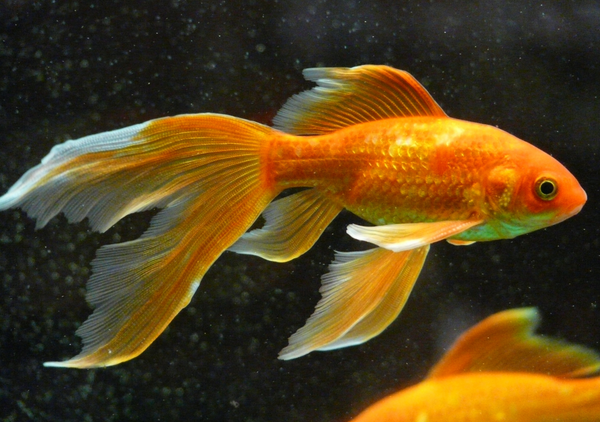Color Changing is NOT Camouflage!
A change of color for a chameleon can happen as fast as 20 seconds. However, it is not to blend in with the surrounding leaves or branches like the common belief. Chameleons have cells that have color or "pigment" in them. These cells lie in layers under the chameleons under skin called chromatophores. The top and bottom layers of these cells produce different colors, when these pigment cells change, the color of the chameleons skin changes! Chameleons change their pigments based on light, temperature & mood. A stressed chameleon will exert a darker, more null spectrum of color compared to a happy healthy chameleon that will show off bold and bright colors!
360 Degree Vision
 The fist thing you are likely to notice about a chameleon are their sonar-like eyes moving independently from one another. Chameleons have a complex optical system that enables them to see the world in almost 360 degrees. Chameleons have the uncanny ability to transition between monocular and binocular vision. This means they can view objects with each eye independently, or with both eyes together. Combine this with the high degree of rotation and freedom for each eye and you have remarkably efficient eyesight for protection, hunting and reflexes!
The fist thing you are likely to notice about a chameleon are their sonar-like eyes moving independently from one another. Chameleons have a complex optical system that enables them to see the world in almost 360 degrees. Chameleons have the uncanny ability to transition between monocular and binocular vision. This means they can view objects with each eye independently, or with both eyes together. Combine this with the high degree of rotation and freedom for each eye and you have remarkably efficient eyesight for protection, hunting and reflexes!
Grapple Hooks
Chameleons have very, very strong feet. From afar, they appear to have lobster claw-like feet, however each group of digits contain toes & nails, more like a parrot. On the front feet, the outer group of digits contains three toes, and the inner group contains two. This arrangement of toes is reversed on the back legs. Chameleons have no trouble at all gripping twigs and narrow branches, or reaching up and lifting their own body weight. The nails get very sharp, helping them latch on to bark and rough surfaces, as well as hang upside down!
The Pygmy Chameleon
 Pygmy chameleons, also classified as Rhampholeon's, are an incredibly tiny species of chameleon. There are many species of pygmy chameleon, on average an adult can reach a maximum length anywhere from 1" - 3". They also live a very short life, only 1 - 3 years. On thing you may notice right away compared to regular chameleons is that their tails are very very short. The reason being these pygmy chameleons have evolved to resemble dead leaves, twigs and moss found in their natural habitats.
Pygmy chameleons, also classified as Rhampholeon's, are an incredibly tiny species of chameleon. There are many species of pygmy chameleon, on average an adult can reach a maximum length anywhere from 1" - 3". They also live a very short life, only 1 - 3 years. On thing you may notice right away compared to regular chameleons is that their tails are very very short. The reason being these pygmy chameleons have evolved to resemble dead leaves, twigs and moss found in their natural habitats.
Arbalest Tongue
Chameleons attack their prey from a distance using their very long, sticky tongues. An average chameleon tongue can reach up to 1.5x - 2x its body length! They are long and slender with a sticky, club-like bulb at the very tip. This club is what grabs the prey and pulls the unlucky insect into the chameleons mouth. It only takes 0.07 - 0.1 seconds for the tongue to be launched from the mouth to the target, and are very accurate. Click here to watch an amazing slow motion video of a chameleon showing down on some crickets.





